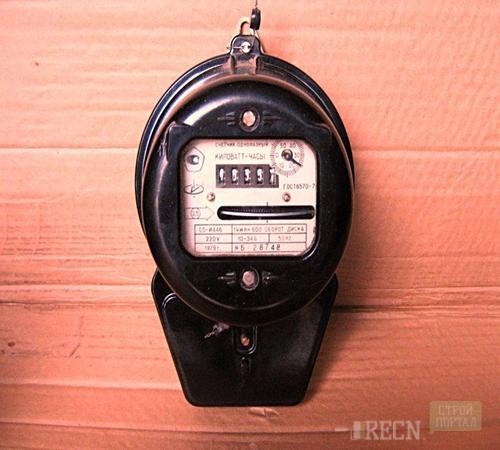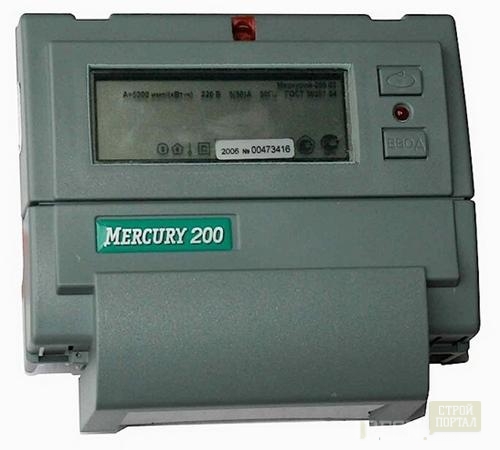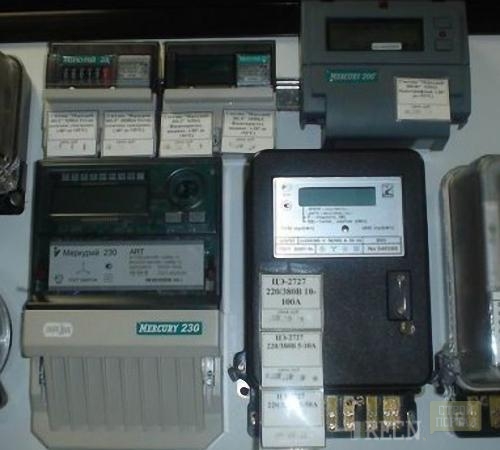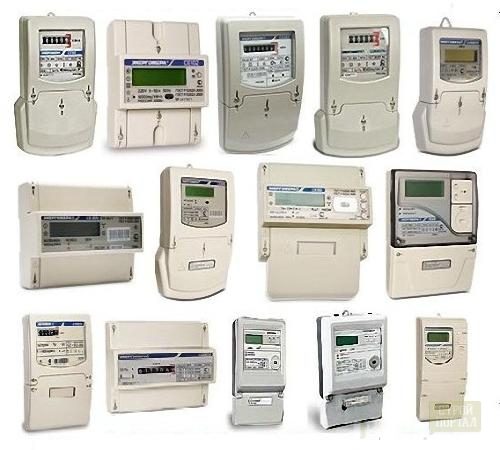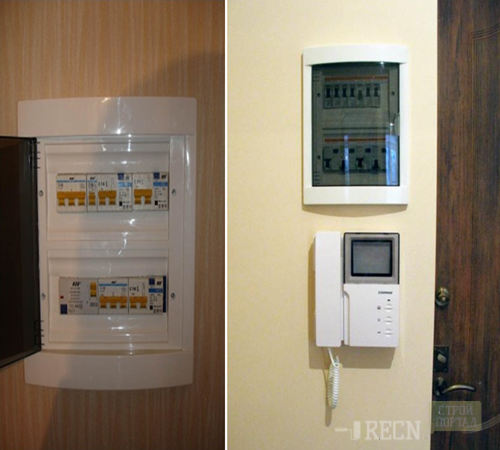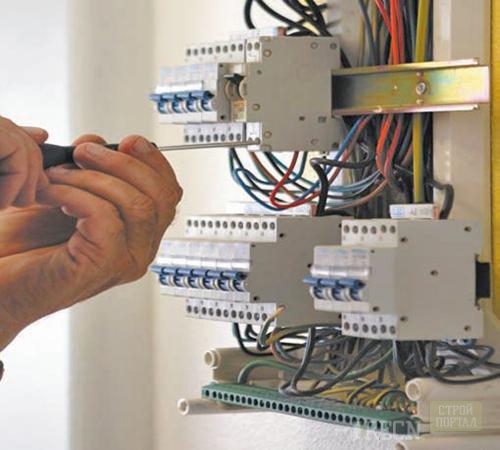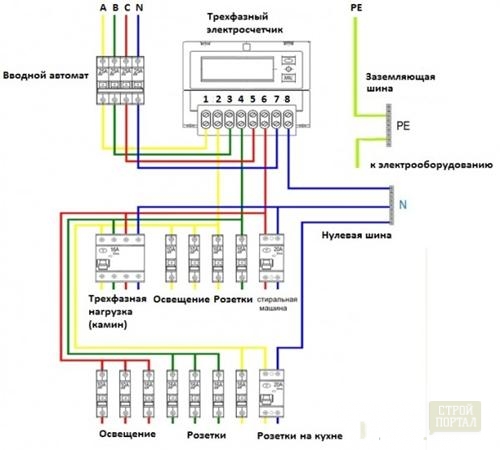
How to install electricity meter with your own hands Lighting,Useful advice
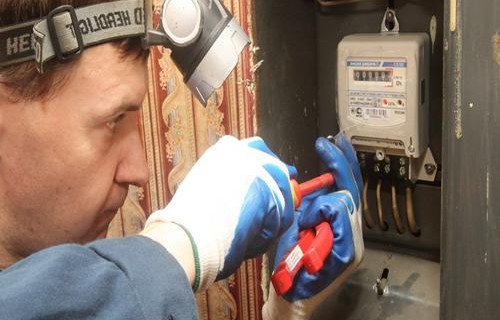
Electricity meters are not just useful devices - these are essentials. Any premises, both residential and non-residential foundation, not equipped with these devices, but at the same time using electricity will be considered outlawed. The owners of such premises are risking to be fined on a large amount of money. In addition, the house is most likely disconnected from the power grid. For this reason, it is necessary to set the counter at mandatory.
Content
Classification of counters
Existing Counters Models are classified:
1. On the principle of operation:
- mechanical. This is the most popular type of electric meter, existing on the market from time immemorial. It functions as follows: The current passing through the device leads in motion round metal elements. They rotate, and the used electricity is taken into account depending on the number of revolutions made. Such counters are inexpensive, but their testimony may have a small error;
- electronic. Such counters appeared much later mechanical. They do not have moving parts, and energy consumption is taken into account by microcircuits or semiconductors. Voltage sensors transmit information about the amount of electricity used. Electronic counters are more expensive than mechanical, but at the same time allow you to keep record more accurately.
2. By the number of supported phases. This indicator at the power grid and the counter must coincide. But there are some three-phase models that can be attached to a single-phase network. But if the network has three phases, then one-phase meters will need three for it.
The main characteristics of electric meters
- Accuracy of consumption of energy and permissible error. Previously, it was ranging from 0.2 to 2.5%. But now the state has introduced a new accounting standard, according to which the maximum permissible error decreased to 2%. Now this is the indicator that is characteristic of most of the devices existing on the market.
- Method of connection. Connecting the electricity meter is possible either directly or through a transformer. It depends on what is the overall load on the power grid. A direct device can be connected when this indicator is not more than 100 A. If it is higher, it is necessary to install a transformer.
- Stress class. When the counter is selected, it is necessary to repel not only from the total load of the network, but also on its own class of voltage. Often it is equal to 220, 380-TI either 100-T. V.
- Type of instalation. When the device is placed on the high side, then the transformer is installed to it. Thanks to it, the output number does not exceed 100 V. The side is high if the input is present a high-voltage line or there is a high-voltage transformer.
- Tariff. In private households, one-limit device is used most often. The two-tariff electricity meter is much more expensive, and need to design a package of documents. It also applies to multi-tariff devices. Because of this, the lack of private homeowners do not apply them. In addition, individuals are not in each case can take advantage of the division into tariffs. Most often it is the prerogative of industrial facilities and office buildings. The multi-tariff counter makes it possible to count the energy consumed according to several tariffs, for example, by day and night.
Single-phase meter installation rules
Installing an electricity meter - a very responsible process requiring strict compliance with some rules:
- the room in which the counter will be installed must be dry so that there are no problems in the installation and further operation; The temperature in it should vary from 0 to + 40 ° C. If it falls below zero, the room should be insulated and damp;
- the device can be set on the wall panels, a panel, a cabinet, a relay compartment complete dispensing device;
- counter can be mounted on metal, plastic and wooden shields;
- distance from the floor to the device can vary from 80 to 170 cm for unobstructed use is better to place it at eye level.;
- slope installed appliance must not be more than 1 °. Otherwise, the error indications may increase. This caution applies only to devices induction;
- niche size, cabinet, panel, wherein the counter is located, should be such that access to the device has not hindered;
- connect the wires need to pay attention to their color. Cleaned, they should be at least 12 mm;
- you need to take care of the installation of automatic switches devices. They will be required in the event that will be repair or replacement of electricity meters. It will be able to turn the power on while the manipulations are made. A controlling authority to accuse you of energy stealing, seal up the device.
Scheme-phase meter installation
If you need an electric meter, you need to think about buying ready-switch board equipped with all the necessary elements. If this is not possible, then the self-assembly need to purchase:
- counter;
- wooden or plastic box, in which the equipment will be installed;
- circuit breakers;
- dIN Rail;
- contact the copper plate, designed for the connection of at least 10 wires;
- three-core cable with a minimum diameter of 3 mm;
- stainless steel screws with a broad hat, or plastic dowels.
The sequence of setting the meter:
1. Start with the necessary pre-placement of all equipment in the panel. This is in order to understand whether it is suitable in size, it is there room for the fasteners, and whether it is possible to place freely in it everything you need.
2. Also note the seats reserved for the plate, and rail-mounted counter. Secure equipment according markup;
click on the lock rail breakers.
3. Now move to the wiring harness as follows:
- print phase on circuit breakers of electrical household appliances available in the room. They serve, in order to prevent power surges and network congestion;
- determine the device according to the device, which side is the phase. To bring it on separate machines, cut the cable shell and remove the red and brown wire from it. Measure the desired segment based on how it will be mounted, horizontally or vertically. Stretching it diagonally strictly prohibited;
- clean the wire for 20 mm, which was removed from the cable, insert the terminal designed to it and lock the fasteners. On the other hand, where the machine switch is located, clean the wire with a maximum of 10 mm. Using the wires, form P-shaped jumpers, work out from the end and connect all the steady switches to the system. It is impossible to allow the position of the wires of the mustache, otherwise the place of contact is overheated;
- after the phase is connected, output zero. Select for this wire of any color. Also measure sufficient length from the counter to the copper plate. Often the terminal for zero is either the first on the right side or the fourth left. Wires for zero Slide and connect from both sides;
- shield Fix on the wall after the counter is connected. First, make the wall of the wall, which it will occupy, drill holes on it and screw up using the screws.
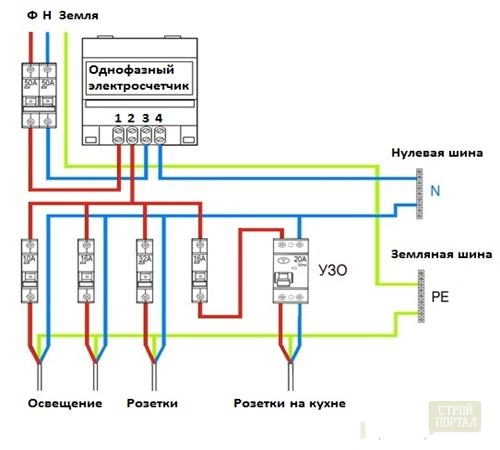
4. Next, set the ground. For steel flaps, the scheme is as follows: the counter - the shield - the contact plate. If the material from which the shield is produced does not carry out electricity, then output the ground directly on the plate.
Before the electricity meter is connected to the network, you need to know in the appropriate instance, is it possible to do this yourself. Most often, the resolution is given subject to subsequent verification and sealing of the device by specialists.
In what cases is required to install a three-phase meter
Three-phase meters are established in the case when energy consumption is at a high level - more than 10 kW. For private households, this is not typical, so single-phase appliances are installed in them.
Three-phase meters are issued not 220, 380 V. This is an indisputable advantage if various works are carried out in the house, such as welding. This device guarantees the absence of voltage jumps, both in the room where it is both in the neighborhood. In this regard, the service life of electrical appliances is significantly increased and excludes the possibility of their failure during the electricity jump.
Three-phase meters are connected directly or indirectly. The second connection option is used if there is a transformer and excessive load on the network. In private houses there are enough first connection option.
A diagram on which a three-phase counter is mounted
Three-phase meters are mounted inside special shields equipped with a platform and three-linked fastening. They are attached, as well as single-phase, and the diagram of their connection is as follows:
- The feed cable has three phases, the fifth conductor for grounding and zero, it enters the electrical panel. The yellow phase connects to the first contact, green - to the third, red - to the fifth. If you make a mistake at this stage, the device will not function correctly. When one of the phases is connected, the counter should be checked for the presence of an error, then after connecting the second phase the check is repeated, etc.
- Electricity is derived from the meter from the second, fourth and sixth contacts. Zero comes to the seventh and eighth contacts.
- Earth conductor is attached to a special bus. It is necessary to bind zero with the land in obligatory so that there is no excessive stress in the network.




